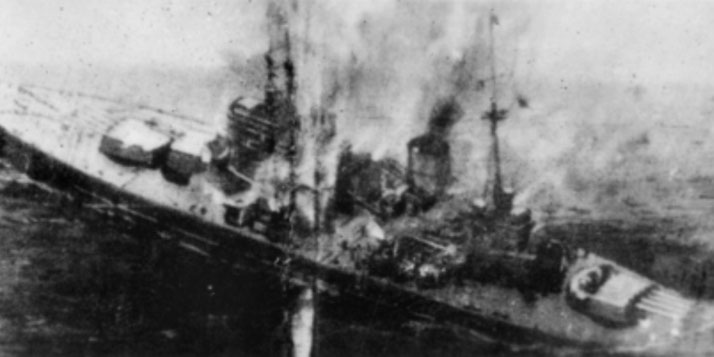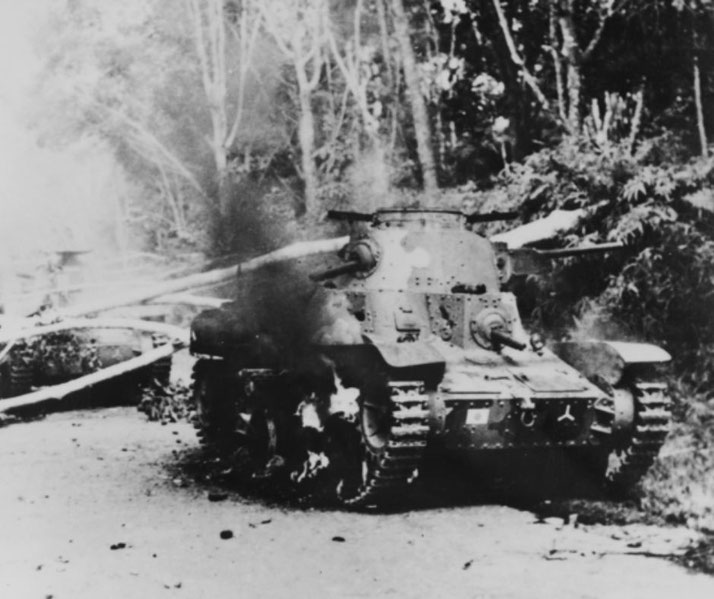The catastrophic fall of Singapore to the Japanese in 1942

The fall of Singapore in 1942 was one of the most pivotal moments in World War II. The city was considered to be a vital centre of the British Empire, and one that was believed to be almost impregnable to enemy attack.
However, the sudden and dramatic capture of Singapore would become famous for several reasons. It would be the first time that a Western colonial power had been defeated by the Japanese.
Also, it would dispel the long-held myth of British naval superiority, resulting in a significant demoralization of the British forces.
So, why did Singapore fall so easily to the Japanese?
And what were the crucial mistakes that were made by the British military that led to their spectacular failure?
The 'Singapore Strategy'
Before the war, Singapore had a population of about 550,000 people and was considered a crucial component of British defensive strategy in Southeast Asia due to its strong naval base.
In 1941, the British military had decided to deploy a large force to Singapore in order to deter the Japanese from attacking.
This was known as the 'Singapore Strategy', and it involved stationing troops and ships in Singapore in order to protect Malaya and the Far East.
The hope was that by deploying these resources, the Japanese would be dissuaded from launching any attacks against British territories.
However, the city had poor natural defences. It was located on a small island at the southern tip of Malaya, and it was surrounded by shallow water.
As a result, the British had decided to rely more on their navy to help defend the city, rather than investing in land defenses.
For this reason, the British fortifications in Singapore primarily faced the sea. This reflected outdated assumptions about where a potential military threat might come from.
Therefore, it was very vulnerable to attack, and the British military did not take this into account when they were planning their overall war strategy for the region.
The attack on the Repulse and Prince of Wales
However, this strategy failed spectacularly in December 1941, when the Japanese launched an attack on the two most important British battleships based in Singapore – the Repulse and Prince of Wales.
These two naval vessels had been sent to Singapore as a show of force against the Japanese. It was thought that their mere presence would be enough.
To shock of many, on the 10th of December, both of these ships, which were stationed off the coast of Singapore, were easily destroyed by Japanese air raids within minutes.
This defeat was a huge blow to British morale. It showed that the Japanese were capable of defeating the strongest resources of British navy and that Singapore was not as safe as everyone had thought.

The Invasion of Malaya
On the same day as the defeat of the Repulse and Prince of Wales, the Japanese began their invasion of Malaya.
They landed at the port of Kota Bharu just after midnight on the 8th of December 1941.
In fact, this occurred several hours before the famous attack on Pearl Harbor due to the international date line.
The Japanese force was spearheaded by 36,000 troops, supported by tanks and aircraft.
Tomoyuki Yamashita, the commander of the Japanese forces, had planned a meticulous campaign, and he was determined to take Singapore within just two months.
To achieve this goal, the invading forces were split into two groups – the Western Force and the Eastern Force.
As the names imply, the Western Force was tasked with advancing down the west coast of Malaya, while the Eastern Force was tasked with advancing down the east coast.
The strategy proved largely successful, and the two separate groups quickly gained control of the Malayan Peninsula.

Why were the Japanese so successful?
The British military had been expecting any Japanese invasion to land at Kota Bharu, but they had not expected them to be able to advance so quickly.
So, if the British knew of this potential strategy and they had time to prepare, why was it so easy for the Japanese to capture the region so quickly?
Firstly, General Yamashita, who became known as 'The Tiger of Malaya', had masterfully executed the Japanese campaign.
Within a week, the Japanese had already captured Kuala Lumpur. Then, by early January 1942 they had reached Johor Bahru which is located just across from Singapore.
Secondly, this rapid advance was made possible by the effective use of combined arms including infantry, armor, and air support.
This unified approach to battles outmatched the primarily infantry-based British defenses.
In addition, the British forces suffered from a critical lack of air cover, as most Royal Air Force units in the region were equipped with outdated aircraft: making them ineffective against the more modern Japanese planes.
Consequently, the British were unable to stop the Japanese advance, and they were forced to retreat southwards towards Singapore.
The attack on Singapore City
On February the 8th, 1942, just hours after their invasion of Johor Bahru, Japanese troops began landing on Singapore Island itself.
They attacked at multiple points on the island, and quickly began to push the British troops back.
This assault was fierce and relentless. It quickly overwhelmed the British defenders.
By this point, the Japanese troops had more battle experience and were well-equipped.
As more soldiers reached the island, they quickly began to make their way through the streets and towards the centre Singapore City.
The British defenders tried to hold key locations and buildings but were consistently pushed back.
Why did Singapore surrender?
After a week of heavy fighting, the Japanese reached the city centre. It had become abundantly clear that the British troops were outnumbered and outgunned.
By this point, the Allied forces had suffered with approximately 5,000 killed and 14,000 wounded.
Also, they were growing more aware that no reinforcements were coming to help them.
Their resources were running low, and they had no answer for the continual air attacks.
So, on February 15th, 1942, the British commander in Singapore, Lieutenant General Arthur Percival, surrendered to the Japanese.

The disastrous outcome of the surrender
Even at the time, the decision to surrender by Percival was controversial and openly criticized, as some believed that the British forces could have held out longer.
In fact, once the surrender was formalized, it became one of the biggest defeats in British military history, and it marked the end of British control over Malaya.
As part of their surrender agreement, the soldiers who had been captured by the Japanese were taken to prisoner of war camps.
An estimated 80,000 British, Australian and Indian troops were captured by the Japanese.
Many of these prisoners would not survive the war, and those who did were often left with deep physical and mental scars.
Many of these prisoners were put to work on the Burma-Siam Railway, where they suffered from malnutrition, disease and brutality.
An estimated 12,000 prisoners died during the construction of this railway.
The impact of the fall of Singapore
The Fall of Singapore undermined British prestige and it paved the way for Japan's further advances into Southeast Asia.
In the months after the Fall of Singapore, the Japanese captured Burma, Thailand, Laos, Cambodia and Vietnam.
They also attacked the Philippines and Indonesia.
For Singapore, this defeat meant that they were now under Japanese occupation, which would last for three and a half years.
For the Allies, the fall of Singapore was a devastating blow. It showed that the Japanese were capable of defeating even the most powerful Western militaries.
What do you need help with?
Download ready-to-use digital learning resources
Copyright © History Skills 2014-2025.
Contact via email
With the exception of links to external sites, some historical sources and extracts from specific publications, all content on this website is copyrighted by History Skills. This content may not be copied, republished or redistributed without written permission from the website creator. Please use the Contact page to obtain relevant permission.





